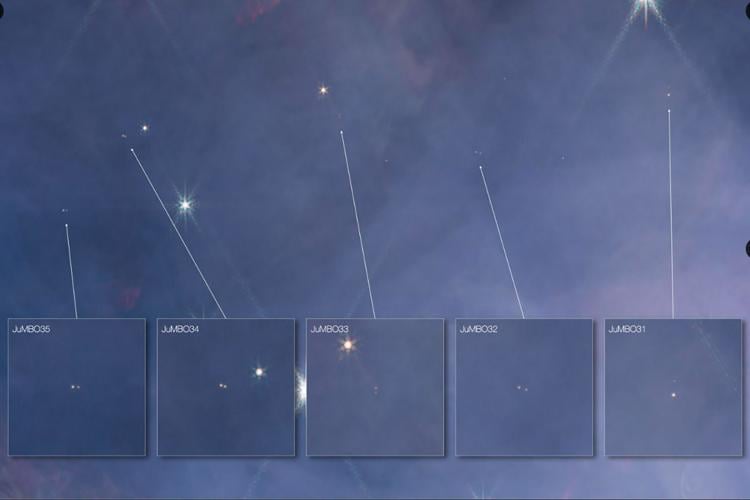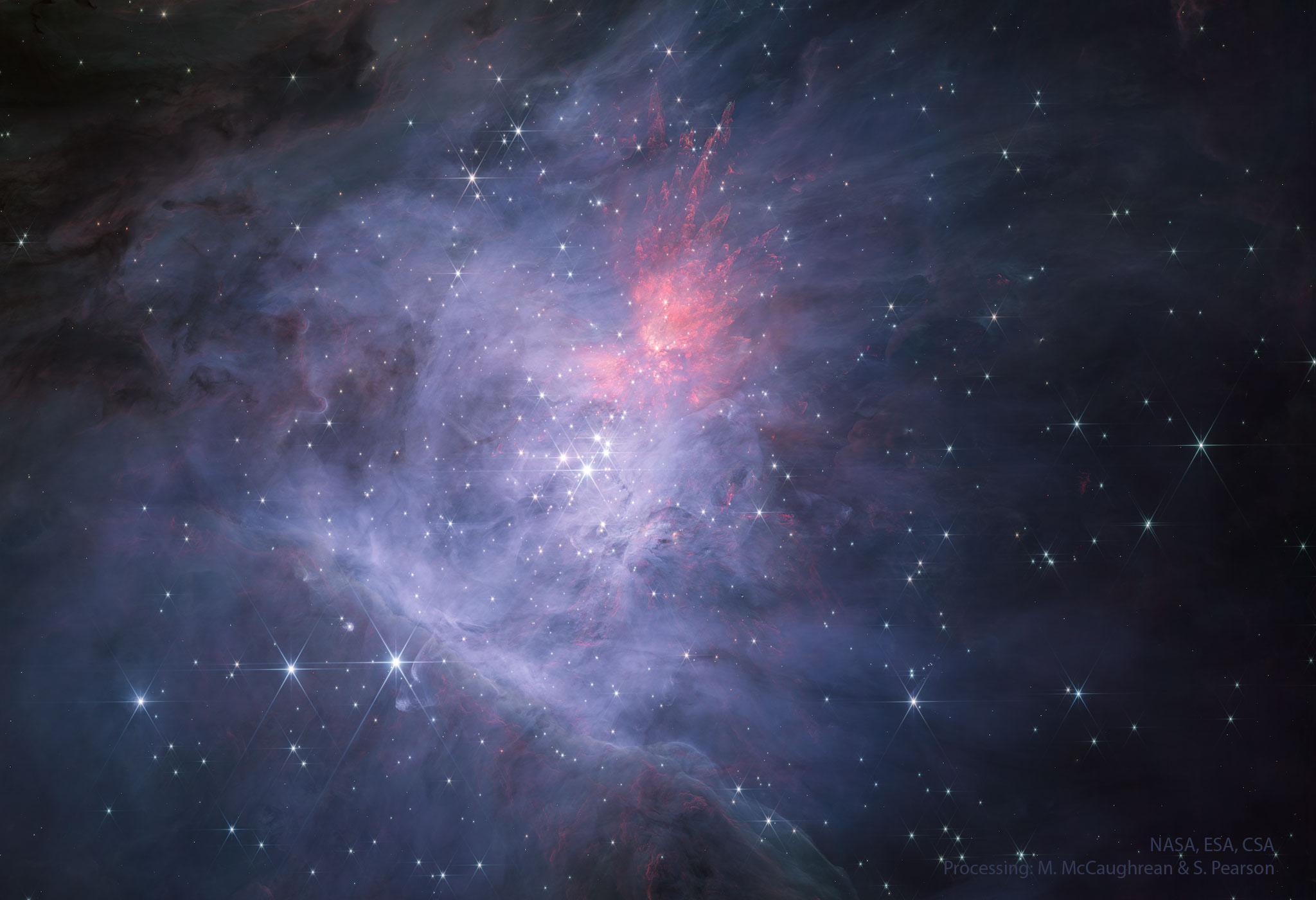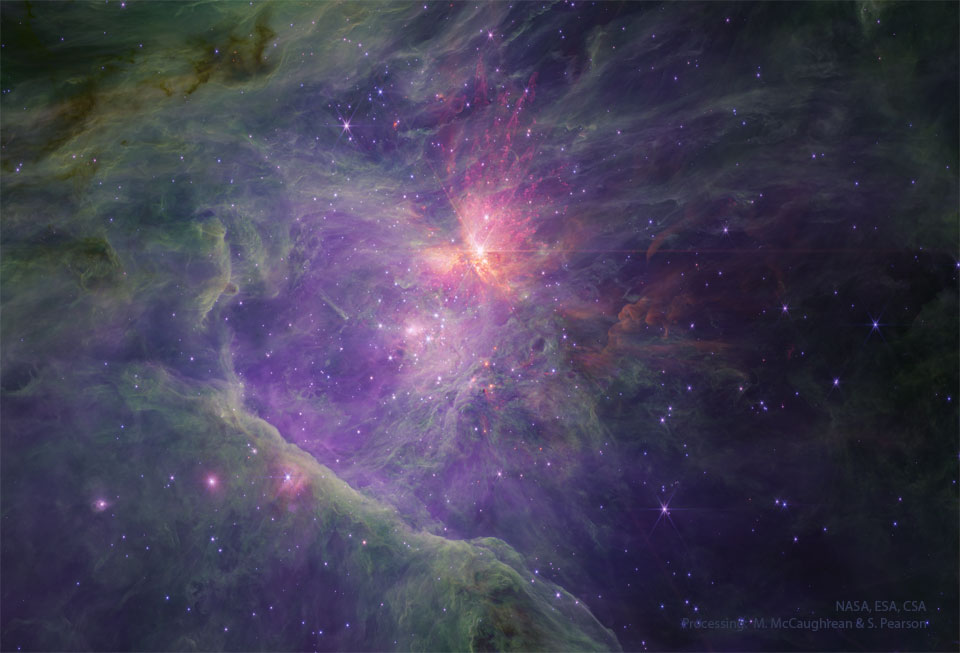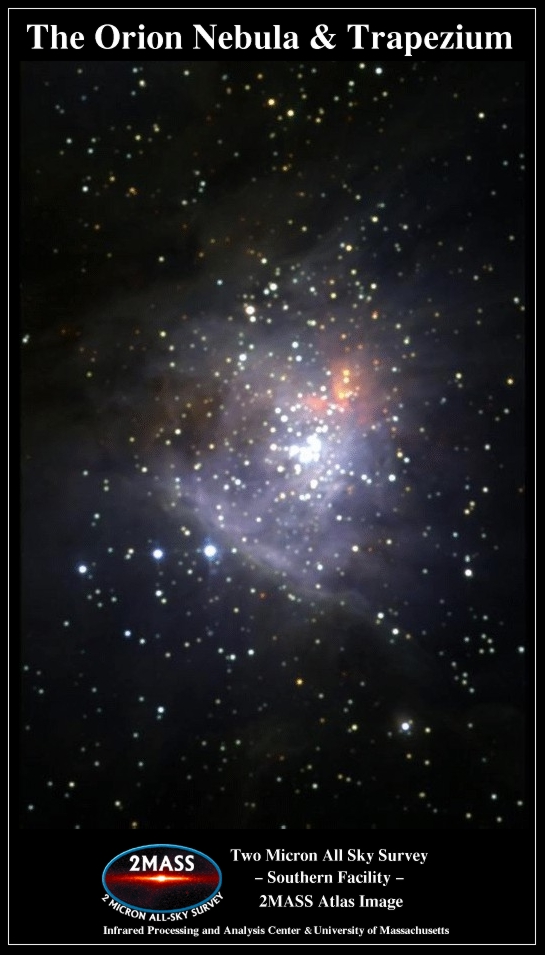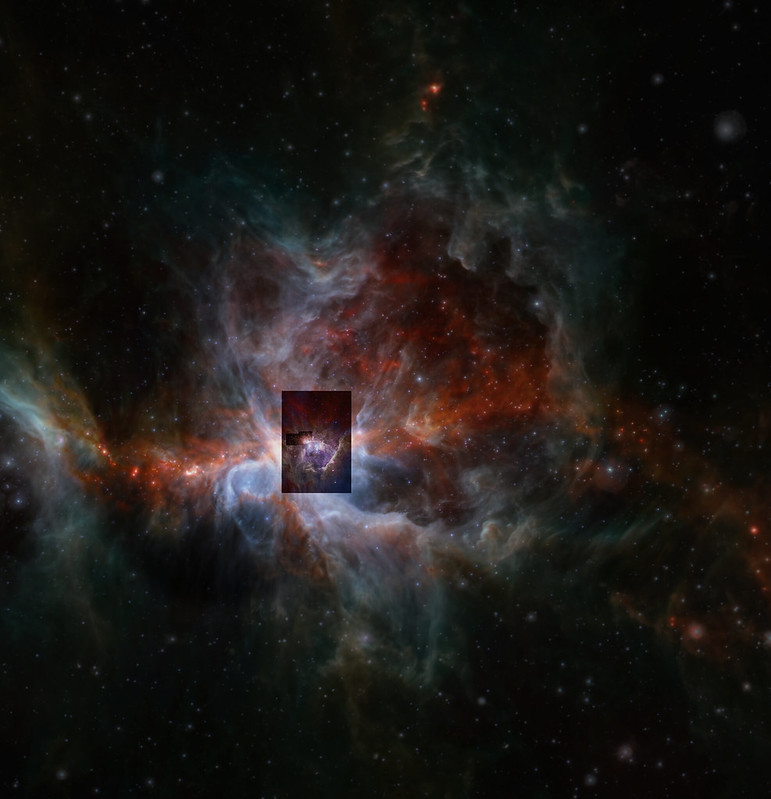"Scientists have used a very large set of data to generate the two colour composite images featured in the slider. A total of 2400 individual images taken through five NIRCam short-wavelength filters were combined to make the full short-wavelength colour composite view, while 712 individual images in six NIRCam long-wavelength filters were combined to obtain the long-wavelength one." ESA Science & Exploration
Slider:
https://www.esa.int/ESA_Multimedia/Imag ... el_aligned
"This young star-forming region is just a million years old and contains thousands of new stars spanning a range of masses from 40 down to less than 0.1 times the mass of the Sun. The region also contains many brown dwarfs, objects below seven percent of the mass of the Sun which are too small to start nuclear fusion in their cores. And below that, starting at roughly 13 times the mass of Jupiter, lie the planetary-mass objects. These new Webb data have revealed hundreds of such objects, floating freely in the nebula, not orbiting stars, the very smallest of which have just 60% the mass of Jupiter or two times the mass of Saturn." ESA Science & Exploration
Five JuMBOs can be seen in this image, which zoomed in on the finer details of the larger Webb portrait of the Trapezium Cluster in the Orion Nebula:
https://arxiv.org/pdf/2310.01231.pdf
Credit: NASA, ESA, CSA, McCaughrean, and Pearson.
This image shows various planetary disks within the Orion Nebula.
Credit: NASA, ESA, CSA, McCaughrean, and Pearson.
The whole story: The Orion Nebula Is Full of Binary Pairs of ‘Planets’ That ‘Shouldn’t Exist’
https://petapixel.com/2023/10/04/the-or ... dnt-exist/
"This new class of objects would be hard to explain even if they appeared as solitary objects in space. However, because Webb has spotted 42 pairs of these objects, they are downright confounding. ... “There’s something wrong with either our understanding of planet formation, star formation — or both,” Pearson says, adding that the JuMBOs “shouldn’t exist.” According to current scientific models, an object like a JuMBO, something that small, should not be able to form from gas and dust clouds. Add in that many of them have formed in pairs, and no suitable explanation makes complete sense. At least not yet."
“This cutout ...
shows bright ‘fingers’ of gas racing away from an explosion that occurred roughly 500 to 1000 years ago in the heart of a dense molecular cloud behind the nebula (?) , perhaps as two young massive stars collided. The dense cloud is called Orion Molecular Cloud 1 and lies to the northwest of the visible Trapezium stars in Orion.” | Credit: NASA, ESA, CSA / Science leads and image processing: M. McCaughrean, S. Pearson, CC BY-SA 3.0 IGO
 Hidden Orion from Webb
Hidden Orion from Webb